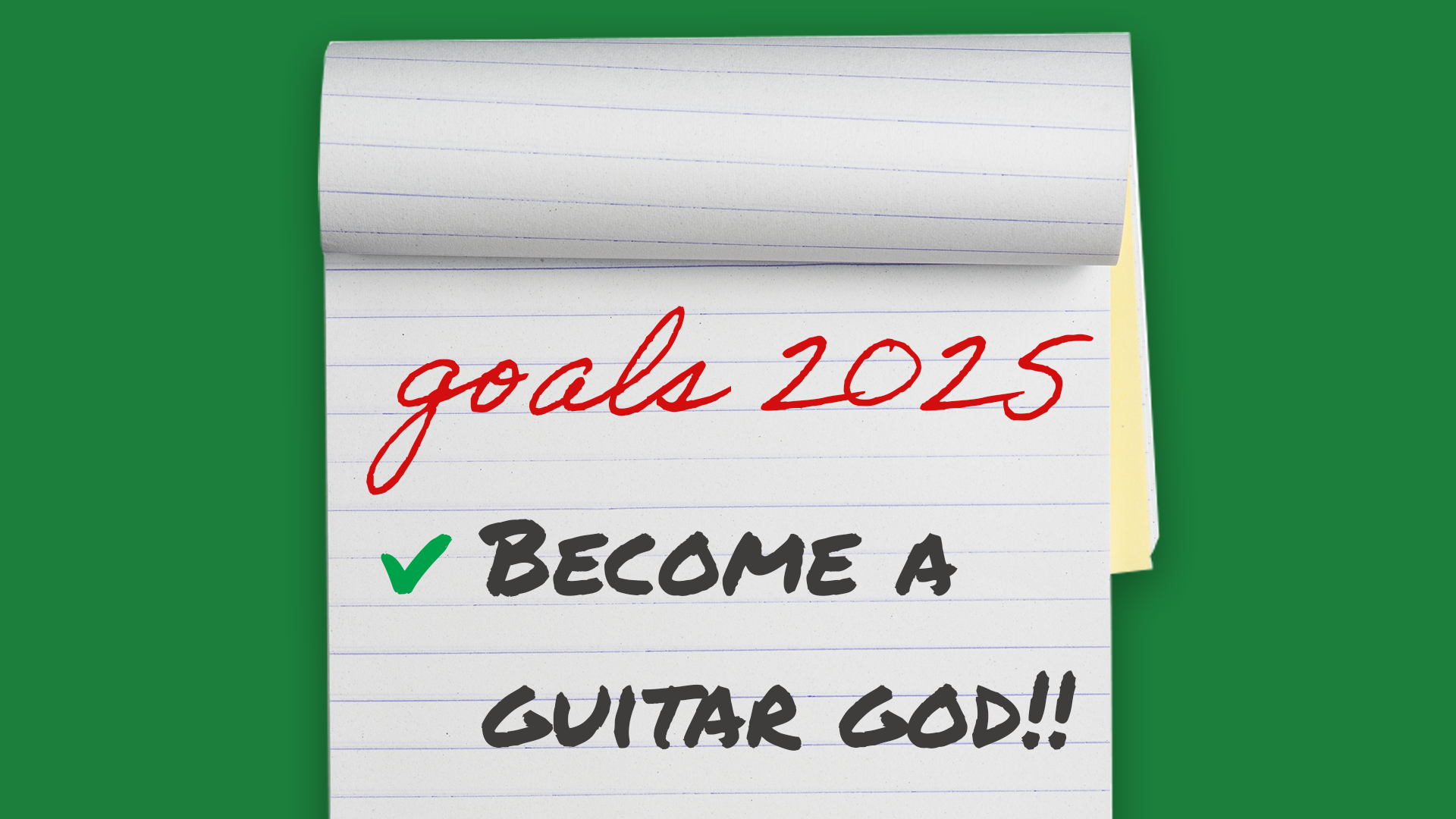Steve Vai plays the guitar with one hand and gives life-changing advice every guitarist needs to hear
Steve Vai had surgery on his picking hand.
That seems like a valid reason to take time off playing the guitar.
You need to use that hand to pluck the strings. Right?
As it turns out; you don’t.
In his latest song, ‘Knappsack’, Vai performs for five minutes and 28 seconds using only one hand. Complete with whammy bar dive bombs, harmonics, and every kind of legato playing you can think of, this track is a master class in left-hand technique.
What I found most impressive the first time I watched this video was the clarity with which Steve plays every note. Often, Guitarists who do a lot of two-handed tapping will use a hair tie or fret wrap to keep the strings that aren’t being played from vibrating and making unwanted noise. Steve doesn’t use one, but he still maintains perfect clarity. That’s not easy! I only noticed one instance in the whole track of what might be considered unwanted noise, which is a giveaway that his right hand isn’t picking the notes and he’s doing everything with his left hand.
In addition to dropping what is arguably the most impressive guitar video I’ve seen since ‘Candle Power’ (where Vai wowed the whole guitar community with his joint shifting technique), Steve also released ‘Alien Guitar Secrets Episode 9: Hand Health’.
If you haven’t watched Steve’s Alien Guitar Secrets videos, they are well worth checking out. Steve Vai is arguably one of the greatest guitar players of all time. And, when a guitarist of this calibre offers free advice, it’s worth taking some time to hear (and really digest) what they have to say.
Here are some of my favourite takeaways from listening to Steve Vai talk about hand health.
Make sure you check out his full video (on his YouTube channel) here:
Pay attention to your hands
Playing the guitar is an activity that actively involves using your hands. This might seem obvious, but it’s important that we actually recognise the implications of this and play in such a way that’s going to allow us to enjoy playing the guitar for years to come.
Steve says that over the last 45 years he hasn’t had much trouble. Which is pretty lucky considering that he’d play for over 10-hours a day as part of his insane 30-hour guitar workout regime. However, Steve also has fantastic technique, which is a very important factor in preventing injuries when you are playing the guitar.
Learning how to pay specific attention to how your hands are feeling will allow you to be more in tune with the different types of pain you might be experiencing while playing the guitar.
Steve mentions muscle soreness. This is normal. When we play the guitar, we are doing a physical activity with our hands and our muscles will get tired. They need time to recover just as they do after working out at the gym.
However, there are other kinds of pains that are sharper and more debilitating than tired muscles. These are more to do with structural issues and Steve says we want to be particularly careful of them.
If you’re experiencing pain that doesn’t just feel like muscle fatigue, it would be a good idea to get it checked out by a medical professional.
Steve talks about how he was feeling pain but didn’t pay enough attention to it. He believed he could work through it and it ended up becoming a more serious problem that required medical attention.
If your muscles are fatigued, you can rest them. But structural things might mean you need to take a break and see a professional.
Listen to your body.
Stay relaxed
Carpal tunnel is a situation where the cables that run through your wrists and allow you to move your hands get frayed or inflamed and have a hard time moving through the tunnel. They can get stuck and sometimes surgery is required to allow them to move freely again.
Steve talks about how he had carpal tunnel once but managed to take care of it without surgery. However, he stresses that the biggest thing he learned through this experience was how hard he was playing. He explains how this experience taught him to relax more when he played.
I often tell students that we want to play the guitar with the lightest possible touch.
We should always be relaxed.
Try and get into the habit of moving your attention around your body as you play.
Is there tension in your shoulders?
Are you holding your forearm too tightly?
If you are, try and relax those muscles. It’s not easy, so don’t get frustrated if you find yourself tensing up again. It takes practice, but over time you’ll find you are able to stay in a more relaxed state while you are playing.
Your posture is important
Maintaining a good posture when you’re playing the guitar is important. Steve would know; he explains he had to get a few discs removed as a result of years of playing with bad posture.
Staying conscious of your posture is difficult. I know it’s something I could be a lot better at. Steve Vai is someone whose technique I immensely respect and after hearing him reiterate the importance of posture I’m going to try and be even more aware of it in my own practice. Steve talks about how it’s been a challenge for him over the years but explains that when your posture is in a proper position, everything flows better.
Staying relaxed; maintaining good posture. These don’t seem like glamorous things to be thinking about when we’re playing the guitar. But they are super important to build into your practice and will help you prevent injury and enjoy playing the guitar for many years to come.
Ironically, the way most people sit when they are playing the guitar is actually not the best position to be in. From an ergonomics perspective, a classical position (with your left foot up on a footstool and the guitar sitting on your left leg) is far more effective. This position allows both your shoulders to sit in a more neutral position and means you don’t have to stretch your wrist around as much when trying to play down the lower end of the guitar neck.
Steve makes a specific point of recommending the Sonus Chair. When you’re playing the guitar, you want to make sure that your back is straight and that you’re comfortable. Steve has found that this particular chair has been the most effective tool for allowing him to do that.
Listening to your body and taking care of things right away is a good practice.
Personally, I’ve always tried to be really aware of my posture when I’m playing the guitar. I try to sit as ergonomically as possible (although I’m still guilty of getting lazy in this area). I try and stay relaxed, shifting my attention around my body and releasing tension when I notice it’s there. I try and maintain a light touch when I play.
When I was younger developed a really bad Repetitive Strain Injury in both my wrists from playing computer games with terrible posture. This took a lot of time and physio appointments to fix. After this experience, I became super aware of my technique in this area while playing the guitar. It’s something I make a point of stressing to students, so it’s always good to see someone on Steve’s level bring some attention to it.
If you haven’t already, make sure you check out the full video on Steve Vai’s channel. And, the next time you sit down to play the guitar, ask yourself,
“How’s my posture?”
“Am I relaxed?”
Being able to confidently answer ‘Yes’ to these questions might actually improve your health!



